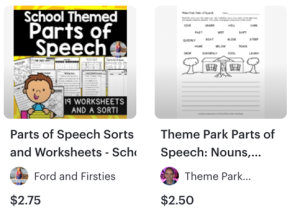
As the new year rolls in through a haze of 2024 banners and slurred renditions of Auld Lang Syne, changes in the teaching profession are (hopefully!) far from our minds. As our focus and attention is pulled from various family meals to other social occasions, it can be difficult to be present and take in
the ‘here and now’.
In teaching, the trend of the dwindling pupil attention span is one that can no longer be ignored.
Gone are the days when children could sustain attention and focus for a full afternoon of science in Year 6, or a hefty double maths session in Year 9. The latest trend in lesson formation and structure is MicroLearning; a streamlined education process that delivers lesson content in bite-sized chunks to appeal to the shorter attention spans of today’s pupils.
For years, short-form entertainment, such as what you can find on YouTube, has been infiltrating the psyche of young people and splitting the intake of information into no more than 10-minute chunks.
From then, media consumption via avenues like Vine, Instagram Reels, YouTube Shorts and eventually TikTok have effectively chopped this into significantly shorter sections, each having the ability to skip content with the mere brush of a thumb on the screen.
Considering how our students experienced their upbringing during COVID, how some children had few people their age to talk to, how they missed out on years of in-person schooling and other activities such as visiting the cinema or the theatre, it’s easy to understand how this shift has taken hold. As much as teachers and parents alike may gruffly mutter ‘back in my day…’ whilst writing a handwritten letter with an ink pen, fighting against something that is undoubtedly the new normal in the young people of today tends to be an unhelpful way of ensuring our students still perform well in school. Instead of asking them to fit a mould of what learning has looked like in the past, perhaps we need to remould our own practices to best serve them.
[enter ‘MicroLearning’, stage left, a smug grin on its face]
[enter ‘MicroLearning’, stage left, a smug grin on its face]
In this brave new world where engagement is akin to a precious gem, a new wave of educators has adopted this method of chunking each lesson into manageable bites to avoid cognitive overload. For example, in a normal English lesson, you would have the input, the main task and the plenary, whereas a lesson following the new format may look more like this:
09:05: A short anchoring task which involves summarising yesterday’s learning
09:10: Teacher input with partner talk and structured discussions
09:20: A physical activity such as cutting/sticking or colouring in line with the Learning Obj
09:30: A short iPad activity that gamifies children’s learning
09:40: A short writing activity that puts their learning into practice
09:55: Summarise and share today’s learning
Now, even reading that makes me want to take some quiet moments in a dark room and catch my breath, and there’s no way that could be sustained for 6 lessons a day, 5 days a week. But with little espresso shots of learning preventing children from worrying about outcomes or achievement, it has the ability to instil a confidence in them that they can meet a target and enjoy the process of completing it. However, some may argue that by buying into this way of teaching, we are forever
saying goodbye to the long-form lessons and the attention spans of yesteryear. Is it a self-fulfilling prophecy, the minute we bite?
Advantages of MicroLearning for Children:
By adopting the microlearning approach to teaching, children will experience a bunch of advantages, such as a boost in their learning outcomes, wellbeing, cognitive development and their confidence.
One of its primary strengths is its ability to deliver bite-sized, focused content straight to the children’s craniums. By breaking down complex concepts into smaller, more manageable chunks, microlearning promotes enhanced retention and comprehension.
Microlearning also cultivates a sense of autonomy and self-paced learning in the classroom, especially if a lesson is delivered like a buffet platter- outlining the tasks expected by the end of the session, but the order the children do it is up to them. Whilst all children will achieve the same amount of work, they are taking management of their own time, organising their own learning to what works for them, therefore setting them up for Sixth Form or University self-led study well in advance. This has the added benefit of helping children with ADD (attention deficit disorder), ASD (autism spectrum disorder) and PDA (pathological demand avoidance) access the curriculum in a way that caters to their learning preferences and needs.
Microlearning can also benefit the consolidation of knowledge, not just the initial learning. Through regular, brief sessions, children can revisit and reinforce previously learned concepts, aiding long-term retention- just like Duolingo or Times Tables Rockstars recommend 10-15 minutes per day for optimal learning! This approach contributes to a more robust foundation of knowledge and skills, essential for kids’ academic journeys.
Another advantage is its ability to work in a range of different environments and to adapt to future technological advances. Want to complete part of your lesson outside? Want to have a carousel of activities on different tables or across the year group’s classrooms? There are clear transitionary periods in these lessons that allow for this. Additionally, with the integration of digital tools and interactive platforms as outlined above, educators can deliver microlearning modules through formats such as videos, games, quizzes, and interactive applications. This diversifies the input, captures children’s interest but also allows for a little respite for us teachers and our 2pm raw vocal cords!
Speaking of how this can help us as educators, let’s talk about the-
Advantages of MicroTeaching for Teachers:
Whilst the trickle-down of microlearning and teaching in primary and senior schools has only happened recently, microteaching as a teacher training method has been around since the 1960s.
Short 15-20-minute sessions followed by immediate feedback was seen as the most effective way of getting educators up to scratch, so introducing this to our pupils seems only logical, right?
One of the positives of embracing this new way of planning lessons and approaching learning is that it allows for experimentation with new techniques for teachers in a low-stakes manner, without the pressure of having to commit to a full lesson in this style. Never used WordWall for in-lesson games
before? Don’t worry- it’s only 5 minutes out of their learning if it doesn’t work for you! Because of this, it can increase educators’ confidence in their ability to account for different cohorts’ learning styles, to be flexible when one aspect isn’t working and in their own digital literacy. This iterative process encourages reflection and self-improvement, building on a favourite phrase of every SMT in the country, ‘for the good of our continuous professional development’ (!).
Furthermore, microteaching helps teams collaborate and communicate more about their own processes- what works for them and what others may wish to avoid. When sharing notes with your cohort’s teacher for next year, you can identify which strategies work best for their engagement. This collaborative environment fosters innovation and creativity in teaching methodologies, benefiting both individual educators and the educational community as a whole.
Microteaching has an added benefit of helping educators improve their planning and organisational skills, as well as classroom and time management to ensure that each bite of learning is being completed. Moreover, the accessibility of microlearning resources allows teachers to personalize their learning journey according to their needs and interests; we need to move away from an environment of not allowing our own needs guide a lesson’s direction sometimes.
Do we prefer delivering lessons in certain ways? Do we find Mondays extremely painful and need a break from tech-in-the-classroom that day? Is Friday the day for live marking above all else? Adopting the differing techniques offered with microteaching, we can look after ourselves more and take another step towards the Holy Grail: the mythical, perfect Work-Life-Balance.
Aaaand The Disadvantages:
As with everything, there are always drawbacks waiting to rain on the proverbial parade…
One of these limitations is the potential for oversimplification of complex topics. Breaking down information into easily-digestible portions may sometimes result in a lack of depth and breadth in understanding certain intricate subjects. This can lead to a superficial grasp of concepts, hindering a holistic understanding that some children might require for more advanced learning stages. In other words, microlearning works excellently to ‘close the gap’ between the lower and higher attaining children; however, if only teaching in this manner, our ‘high fliers’ will miss out on the details and specifics that they often love.
Moreover, the fragmented nature of microlearning modules could make it difficult for teachers to how (and for children to grasp) the connections between different learning concepts. Pupils might truggle to see the ‘bigger picture’ or understand how various ideas interrelate when learning in solated, smaller segments, possibly hindering critical thinking and the development of problem-solving skills in the long term.
Whether this is something you adopt in the terms to come, either holistically across all learning, or as another tool in your belt to increase engagement, hopefully the points outlined above will help you to be as informed as possible before diving in!
Next month, I will be exploring the long-term effects of lockdown on learning, attitudes, engagement and attainment. For now, though, let us bask in the festive period! I wish you all a wonderful new year and hope that the January blues are kept at bay for as long as possible!
Written by Lauren Austin
Laurenaustinauthor.com





















